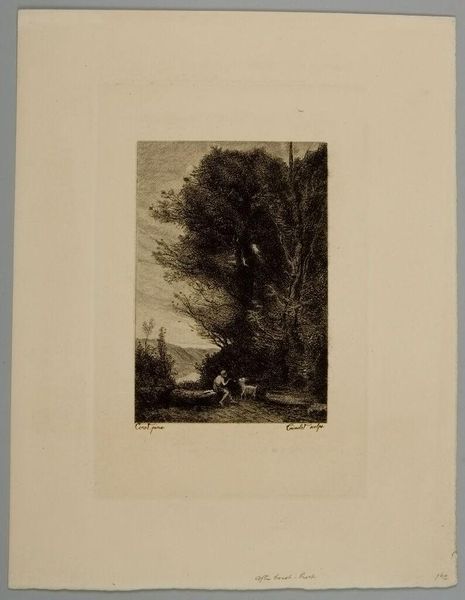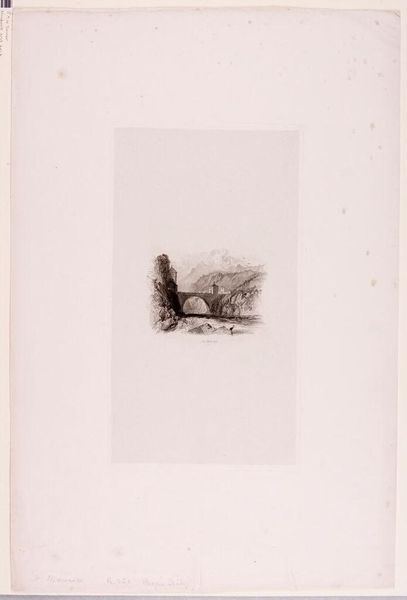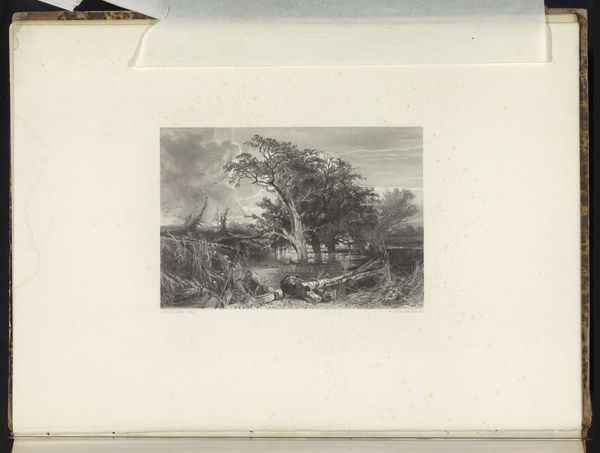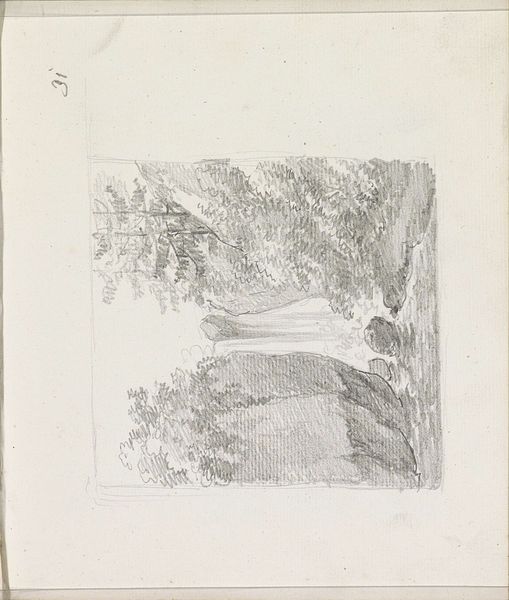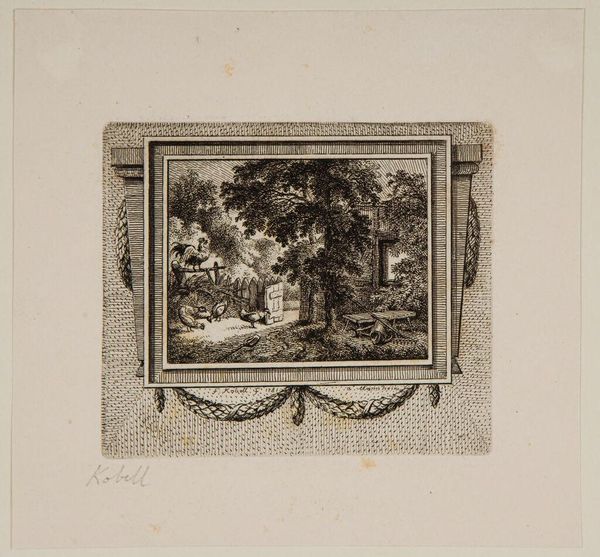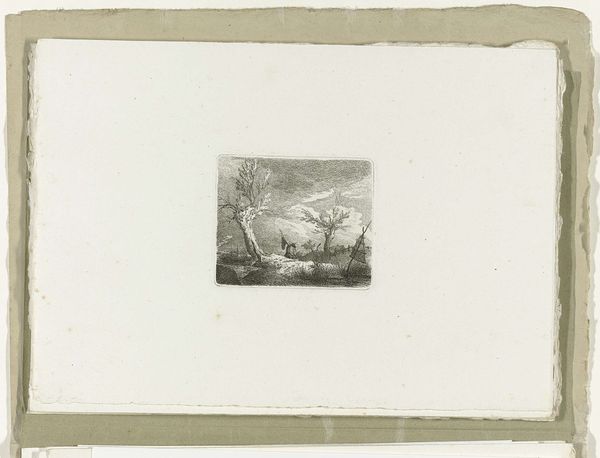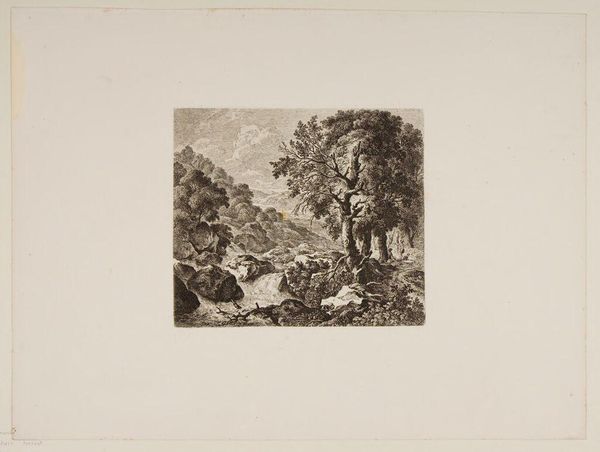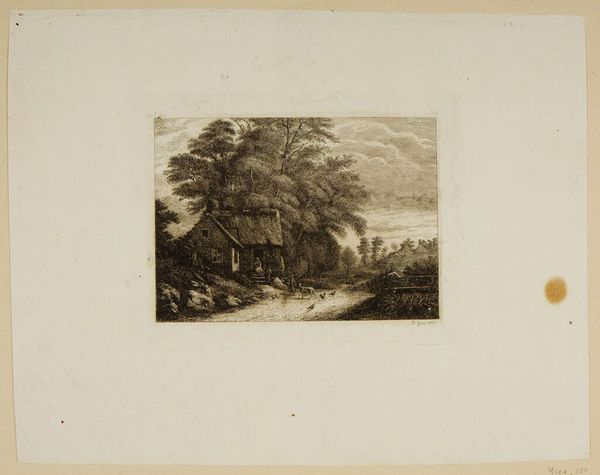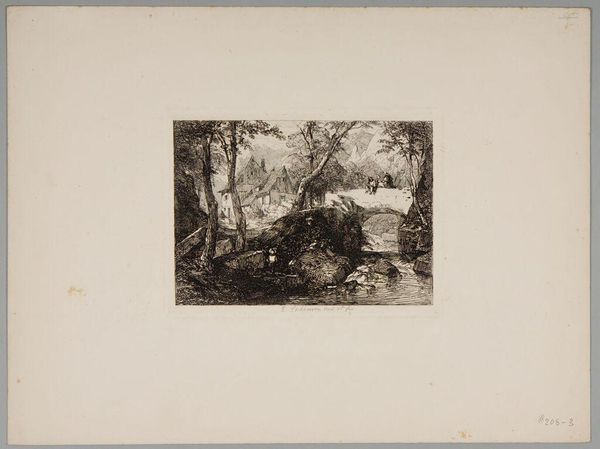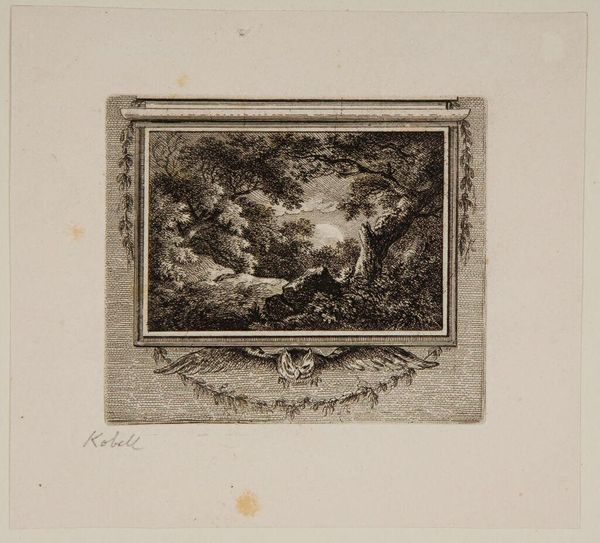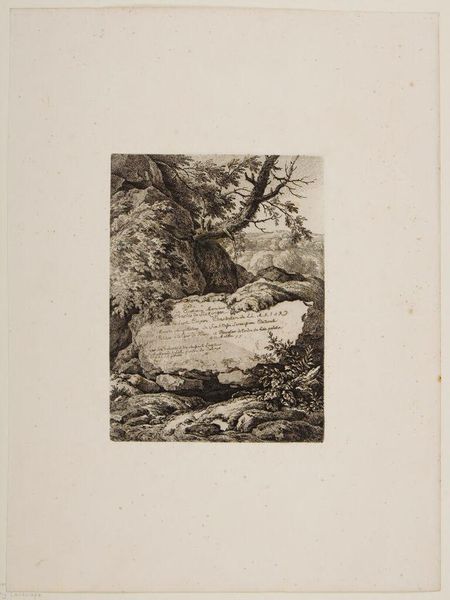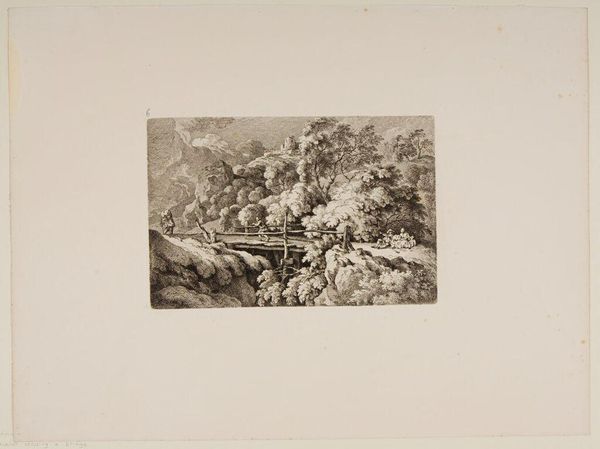
Copyright: CC0 1.0
Editor: Here we have Ferdinand Kobell’s "Landscape Four" from the Harvard Art Museums. It's a detailed etching of a pastoral scene, but the framing device around it is what catches my eye. How do you interpret this work? Curator: Consider the printmaking process of the late 18th century. Etchings like this were often reproduced and consumed widely. The landscape wasn't just art; it was a commodity, shaped by the labor of the artist and the demands of the market. Editor: So, the framing isn’t just decorative, but speaks to its function as a reproducible object? Curator: Precisely! The ornate framing emphasizes the object’s value and reproducibility, while the landscape itself idealizes a certain vision of nature as something to be owned and consumed visually. What do you think? Editor: That makes me think about who could afford these prints, and how this landscape ideal might have differed from their reality. Curator: Exactly. Looking closely at the materiality and context allows us to question whose visions are being circulated and consumed.
Comments
No comments
Be the first to comment and join the conversation on the ultimate creative platform.
